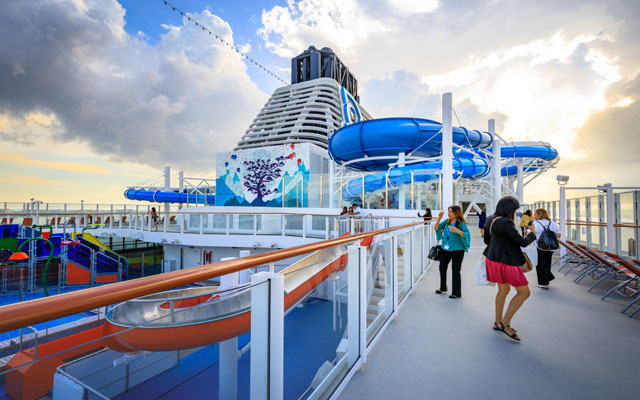Amid the cruising boom in Asia, penetration rate in some fast-growing markets in South-east Asia remain as low as 0.02 per cent, underscoring the need for the region’s travel agents to enhance their product knowledge and marketing capabilities to tap the growth potentials.
Cruise passengers originating from Asia crossed the four million mark in 2017, up 20.6 per cent over 2016, and is now the world’s fourth largest cruising region, said Jiali Wong, regional manager, Asia, Cruise Line International Association (CLIA) during a travel agent seminar held by the association during ITB Asia last week.
While China is the region’s largest source market, Wong pointed out that “almost every market in Asia saw double-digit growth”.

The statistics reflect healthy consumer interest in a region where travellers are starting to “recognise cruise holidays as a relaxing and value-for-money option”. It also helps that cruise is “a natural fit” for families, a key travel segment in Asia, she pointed out.
This cruising wave is translating into great opportunities for travel agents.
“Unlike a lot of travel segments, where consumers are starting to book direct, travel agents remain a key distribution channel for cruise lines. In fact, the majority of agents have over 80 per cent of their products listed by travel agencies. This translates to potential for travel agents to tap into the cruising segment to increase sales,” Wong said.
However, with penetration rates still low in many of Asia’s markets, Wong stressed that travel agents “need to be more cruise-educated by taking the next step to familiarise themselves with products”. CLIA is stepping up support for travel agents looking to sell cruises, through training and accreditation as well as sharing resources such as marketing toolkits.
In Indonesia, the outbound cruise market is showing an alluring 40.2 per cent year-on-year growth. Only one in 5,600 Indonesians are cruising, putting the penetration rate at only 0.017 per cent.
With the tremendous room for further growth, travel players are taking a greater interest in the cruise business, starting by sniffing out opportunities to hone their knowledge and expertise.
For example, Selayar Kepulauan Lestari – which has been offering yacht and cruise itineraries out of Bali, servicing mainly European travellers – now wants to foray into Indonesia’s outbound cruising market.
On the sidelines of the CLIA seminar, company spokesperson Iwan Syahlani shared with TTG Asia plans to undergo the association’s accreditation programme to pivot into the cruising market.
He said: “We now want to penetrate the outbound market. (As the numbers show), there is a large potential market of Indonesians wanting to enjoy cruising around the world.”
But the market is still nascent, said Iwan. “Unlike in Singapore, there is nothing happening in Indonesia to educate travel agents and help them better understand cruise tourism.
“I would like to learn more and be able to create marketing campaigns to penetrate big city markets like Jakarta, Medan and Surabaya.”
Apart from CLIA’s training and accreditation, Iwan also hopes to pursue learning opportunities with a Jakarta-based consultant in cruise line marketing.
Further highlighting the importance of education for travel agent is the proliferation of cruise products in the region, not only in terms of capacity but also the types of offerings available.
“Ships are moving more and more to the east. This year we’ll see almost 38 cruise lines represented in Asia with more than 78 ships. There is also more variation in the types of cruise products,” CLIA’s Wong pointed out.
For example, in addition to large ships, small luxury cruising is also catching on in Asia.
“This ties back to agents having to familiarise themselves with what products are out there. They need to leverage the unique selling points (of the relevant cruise product) and (how to target the different products) to customers,” Wong stressed.




















